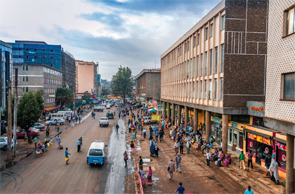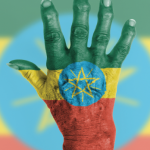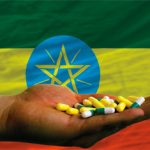Establishing professional relationships with the physical therapists in Ethiopia is at the core of our collaboration. Their generosity in mentoring/supervising our students in the clinic, strength in modeling care in the unique environments, and excellence in teaching while treating patients facilitates the engagement. Language barriers are minimized, with the therapists’ knowledge of English. Discussions related to the impact of culture and values on approach to patient care promote growth in establishing relationships and respecting difference. We have collaborated in rural and urban hospitals, specialty clinics, outpatient facilities, community homes and schools. Sharing knowledge related to culture, patient care and the profession of physical therapy fosters an understanding of resources, professional goals, life experiences and future directions.
Contrasting Perspectives
Diagnoses encountered by the American physical therapists and students while working with the physical therapists in Ethiopia range from the “familiar” to the “rarely seen.” For example, musculoskeletal dysfunction, post-trauma recovery, cardiovascular dysfunction and wound care would be diagnoses treated by therapists in both countries. Working with individuals with spinal tuberculosis, polio or Hansen’s disease would not be common in the U.S.
Specific to rheumatology, an informal survey of physical therapists in Addis Ababa indicates it’s not uncommon to treat individuals with osteoarthritis, rheumatoid arthritis, gout and ankylosing spondylitis. Treatment interventions for individuals with arthritis include, as appropriate, joint mobilization, range of motion, exercise, splinting, hydrotherapy and other modalities. Mechanisms to identify and address various types of rheumatological disorders are evolving in Ethiopia, which may increase the type and number of patients treated by their physical therapists.
Current literature, such as “Cardiovascular risk factors and carotid atherosclerosis in patient with systemic lupus erythematosus at Kenyatta National Hospital” by Shiruli et al, published in 2014, increases awareness of rheumatology disease processes that can be addressed by physical therapists, including cardiovascular risk factors.6
Prevalence
Tracking the type and prevalence of rheumatological disease in Africa is advancing. Historically, the burden of rheumatology disorders in Africa has been overshadowed by life-threatening disorders, such as tuberculosis, malaria and human immunodeficiency virus (HIV).7 However, literature is emerging that explores the burden of non-communicable diseases in Africa.7-10

In the streets of Addis Ababa, the capital of Ethiopia.
Associations exist that increase knowledge and communication related to the state of rheumatological disorders in Africa. The African League for Associations of Rheumatology (AFLAR), established in 1989, recently initiated the biannual publication of the peer-reviewed African Journal of Rheumatology (AJR).11,12 The Community Oriented Program for Control of Rheumatic Diseases (COPCORD) is a program that collects data on “pain and disability” from rheumatic disease in developing countries, using a grassroots approach.13 COPCORD may also increase awareness of prevailing diagnoses that can be partially or fully managed by physical therapists.


